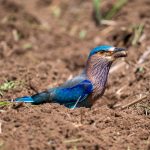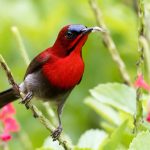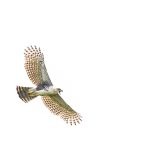 There are sulphur-colored birds, and hideous intestines
There are sulphur-colored birds, and hideous intestines
hanging over the doors of houses that I hate
— Pablo Neruda, Walking Around
Depending on the direction towards which your inner compass points, the word sulphur might conjure images of the Periodic Table of Elements, lit matches, bubbling hot springs, or even butterflies. You may even stop to think that the word should be spelled “sulfur.” But sulphur can also describe a color, though the actual hue may vary depending on the speaker.
Elemental sulfur is at room temperature a pale or bright yellow crystalline solid. This is the form and color with which it is most identified. In fact, though the origin of the word can be traced down different paths, none of them certain, one potential cognate is the Arabic word sufra which means yellow. Sulphur as a descriptor of color doesn’t always refer to the lucid yellow of a sulfur crystal. Sometimes the yellow is tinged with green, while in other applications, the object may be closer to mustard or ochre.
A number of birds around the world are spoken of as sulphur, the most famous of which is probably the Sulphur-crested Cockatoo (Cacatua galerita) of Australia. This iconic avian, sometimes a pet, sometimes a pest, but always impressive, has plumage of purest white with a faint wash of yellow on the underside of its wings and tail. Its eponymous crest is a pale canary yellow, clean and bright.
The Sulphury Flycatcher of South America bears a close resemblance to the Tropical Kingbird. Oddly enough, this tyrannid is the only bird that includes sulphur in its common name as a holistic identifier rather than a descriptor of a particular body part. The cockatoo is the only bird named for sulphur in its crest, but other species bear it in their beards (spinetail), bills (nuthatch), throats (finch), and wings (parakeet). You’ll find both an African bushshrike and an Asian warbler flashing sulphur on their breasts along with American tanagers and flycatchers with sulphur rumps. The most popular sulphuric body part is the belly, with bulbuls, flycatchers, tyrannulets, tyrant-manakins, warblers, and whistlers all so named.
Some readers may associate sulphur with brimstone, an association linked no doubt to either the Bible or a generally diabolic nature. For those people, be they sinners or saints, may I present the Brimstone Canary (Serinus sulphuratus) of Africa. This bird combines shades of sulphur, chestnut, and old gold (which is, mind you, a legitimate color) to pleasing effect.
Of course, for every bird with sulphur in its name, there are about fifty with plain old yellow, but where is the fun in that? Considering the plethora of options, yellow seems a rather uninspired choice for a bird’s common name unless, that is, the name is Yellowhammer. That’s a name any bird could be proud of.












I’ve often wondered why we spell it “sulfur” everywhere except in bird names. It turns out that “sulphur” is the older British form, and “sulfur” is a newer Americanism. For some reason, the British spelling has persisted in New World bird names. However, in certain other cases where spellings differ, we use the American form (e.g., Gray Jay). Odd. The South American Checklist Committee has apparently struck down a proposal to change “sulphur” to “sulfur” and Americanize other spellings of bird names on its list.